Macondo in California: Story of an Experimental Community Garden
Three years ago I named my orchard Macondo. It is located at the community garden right next to The Domes. Everyone in town knows this commune.
About thirty self-ruled students funded it almost forty years ago, they were looking for an alternative student residential project and they named it The Domes.
Within the University of California Davis campus, there are fourteen white little houses in the middle of an orchard with an unusual igloo shape. The houses were built in a self-sustaining way, with low impact materials, and materials that reduce the energy consumption due to their thermal properties like polyurethane and insulated fiberglass. Each dome has a small wooden door as main entrance.
“The student initiative main objective was to occupy the space and experimentally grow organic and nutritious food.”

Student’s residences view.
Photography: By Firstcultural (talk) (Uploads) – Own work, CC0, https://en.wikipedia.org/w/index.php?curid=34153736
The area is known as the “Sustainable Research Area.” Without any man-built structures, any product that gets into these five acres should be recycled or recyclable. Five acres of fertile soil, where the only maintenance that is given to the land is produced within the same garden, the compost comes from the remains of each user and the fertilizers are brought from the university community farm.
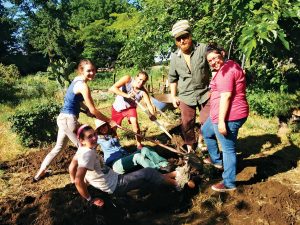
Members of the Experimental Community Garden in Davis.
Photography:
By Firstcultural (talk) (Uploads) – Own work, CC0, https://en.wikipedia.org/w/index.php?curid=34153736
“The garden teaches us how to reduce the carbon footprint leftover from our food production bad habits…”
As part of this communal spirit of preservation, the Experimental Community Garden was born more than two decades ago. The student initiative main objective was to occupy the space and experimentally grow organic and nutritious food. Over the years, the garden was opened to the local community. Teachers, staff, graduate students and several Davis residents joined this collective dream.
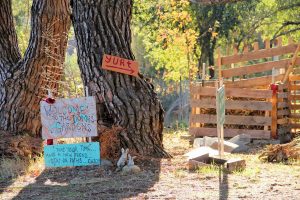
Señalización, cajas de siembra y actividades del Jardín Experimental Comunitario. Photography: Mayton Xu
The only condition to register was, and remains to this day, to be willing to develop lasting friendships. Part of the community’s garden tasks are: to learn together about planting and harvesting; to understand how we can reduce our waste; to share, learn and teach among each other how our food grows. Above all, the garden’s purpose is to develop self-sustaining strategies to perpetuate the fertility of the soil.
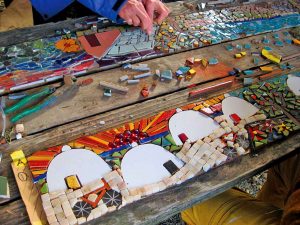
Photography: Elise Kane
Every month there are workshops and communal potluck style meals, among the five acres there are several spaces for community recreation and learning: there is a compost area, a shed with free used tools, a bee sanctuary, a rabbit farm and several chicken coops in order to get organic free-range eggs.
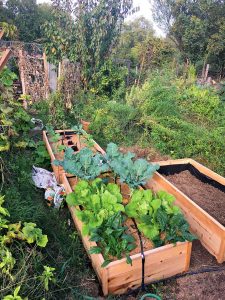
Photography: Mayton Xu
The garden teaches us how to reduce the carbon footprint leftover from our food production bad habits, and at the same time you can learn how to produce and consume responsibly, eggs, cereals, fruits and vegetables.
By having a plot or orchard, the quality of my life has increased over the past couple of years, not just because attention is paid to details, but also because one understands how precious it is to have access to nutrient-rich vegetables and fruits, grown only with water, without agrochemicals or pesticides. They taste so different, and it is just incredible how we can modify our palate depending on the produce we eat.
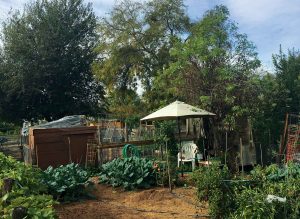
Orchard in the Experimental Community Garden.
Photography:
María Fernanda Díaz Basteris
Nowadays in this world, being able to live in a community like Davis is basically a luxury never taken for granted. Knowing I can use my hands to produce the food I am bringing to my table makes me happy, and it is also a utopian human behavior.
Full article in our 03 printed edition.








